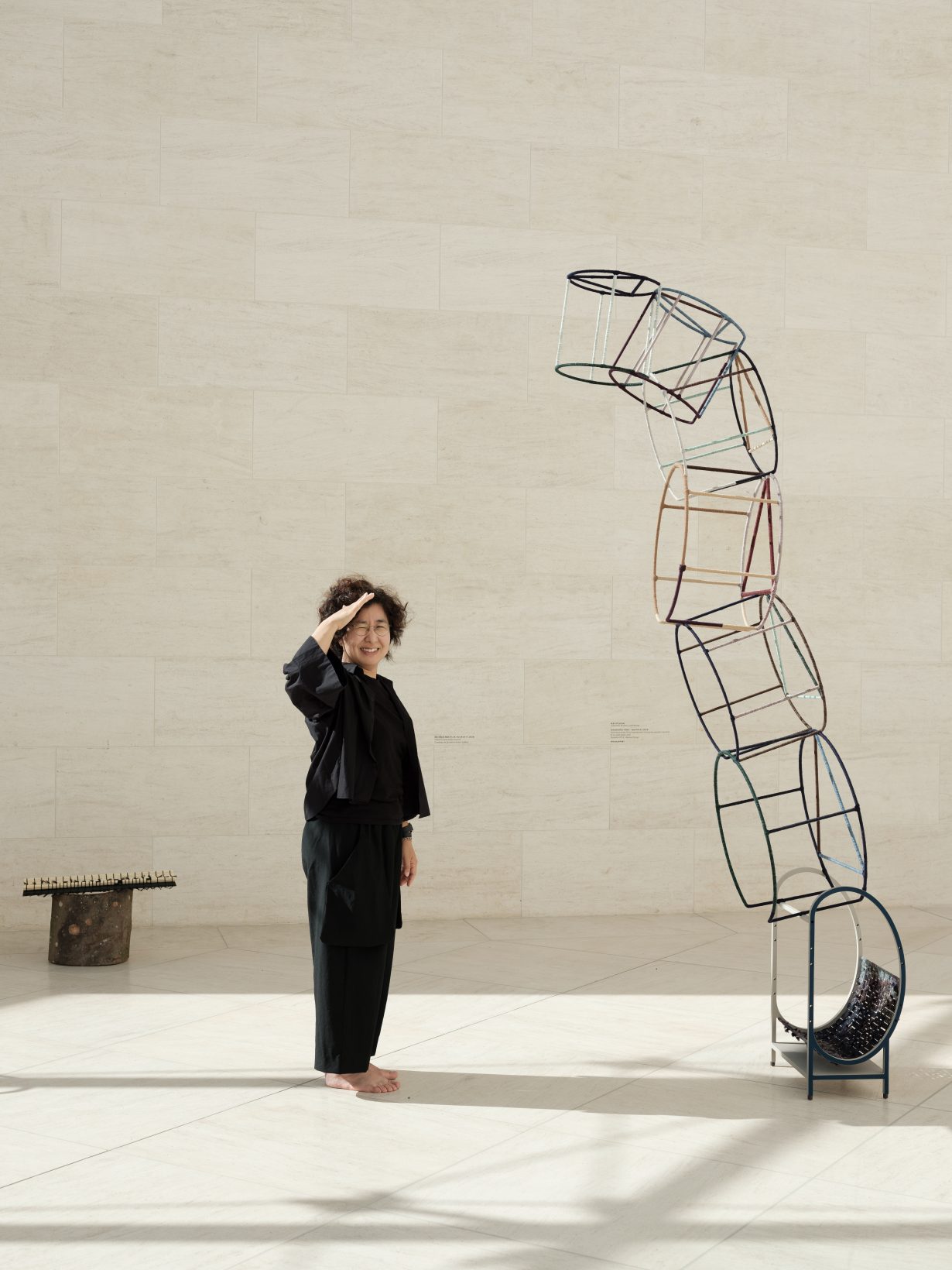
Suki Seokyeong Kang’s work crossed a multitude of media, including sculpture, installation, painting, video and performance, but continuously returned to her interest in how traditional Korean thinking and heritage could be applied to the contemporary human condition.
A signature series by the South Korean artist, who died on Sunday, was Grandmother Tower, first conceived in 2011 and reformulated in a number of similarly titled sculptures thereafter (most recently for the 2024 Venice Biennale). The artist built a drum shape from a pair of hooped dish carriers, threaded together; these in turn were piled on top of each other and mounted on a tea trolley or wheeled walking frame. Loosely human in scale (the original was made to the artist’s height) they typified her interest in the precarious individual in relation to the world around. ‘It’s a space for bodies at rest and in motion, for stasis and change,’ Mark Rappolt wrote in his 2019 profile of the artist for ArtReview.
Kang studied oriental painting at high school and then at Ewha Woman’s University in Seoul, where she was a professor of Korean painting. Following these studies in her homeland she completed an MA in painting at the Royal College of Art in London, graduating in 2012.
Her gallery Kukje paid tribute on social media ‘She has left behind a crucial legacy to Korean contemporary art through her distinctive formal language, reinterpreting Korean traditional concepts and methodologies as well as incorporating narrative elements from her anecdotal and bodily experiences… questioning the position of an individual in today’s society, as well as the presence of the other in coexistence with the self.’